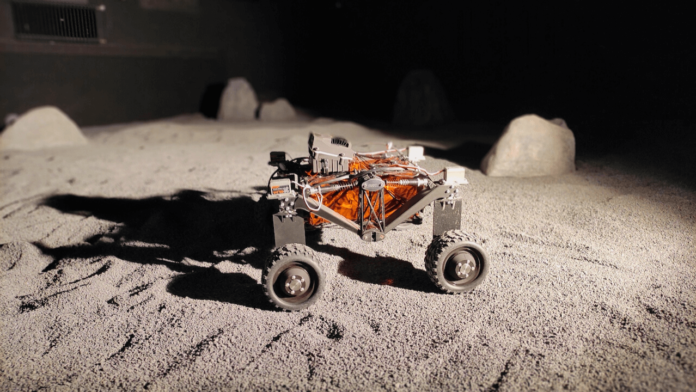As part of an international space application hackathon – ActInSpace-Luxembourg hackathon 2020 edition – , student team Kepler decided to explore to build the lunar rover on the basis of a prototyped rover configurator.
They received the support from the Space Robotics Research Group from SnT and Technoport for the business concept and Luxembourg-based 3D printer manufacturer Anisoprint for the manufacturing process. This is not the company’s first experience in supporting a student team. As a matter of fact, it recently sponsored the fabrication of automotive parts for Formula Student.
In this case, once the student team Kepler designed the parts for the lunar rover vehicle. Anisoprint has used its Continuous Fiber Coextrusion technology, ideal for the creation of lightweight and durable composite parts that can serve as replacement to metal parts.
The company explains in a press release that the advantages of continuous fiber reinforced composites, flexible material choice, high durability and small weight, pave the way to a number of industrial uses where mass counts. Aerospace is one of such industries, as extra mass creates a lot of expenditure due to fuel consumption and many other factors. With the rover, the main challenge was to make a robot with a mass under four kilograms, and 3D printed composites was an ideal option, so the team turned to anisoprinting for light weight and high strength. The solution included remodeling two suspension parts — a wheel mount and control arm — for layering reinforcing fibers and ensuring strength and durability.
There was chosen carbon fiber for reinforcement as the lightest option and SmoothPA for achieving a polished surface. The resulting weight of the parts is as small as 64 grams for the control arm and 24 grams for the wheel mount as there was used only 15% infill (see lattice structure below).
“Application cases we deal with primarily come from areas where isotropic materials proved ineffective, which means we always change the design for anisotropic reinforcement, both geometry and weight count here. Composite 3D printing has a large potential for aerospace, and we help people explore it and get maximum benefit from the technology”, explains Aleksey Ivanov, Anisoprint application engineer.
Remember, you can post job opportunities in the AM Industry on 3D ADEPT Media free of charge or look for a job via our job board. Make sure to follow us on our social networks and subscribe to our weekly newsletter : Facebook, Twitter, LinkedIn & Instagram ! If you want to be featured in the next issue of our digital magazine or if you hear a story that needs to be heard, make sure you send it to contact@3dadept.com






